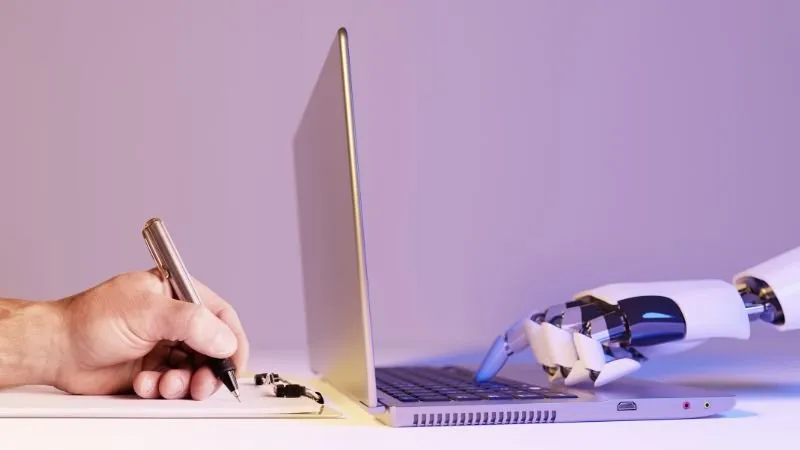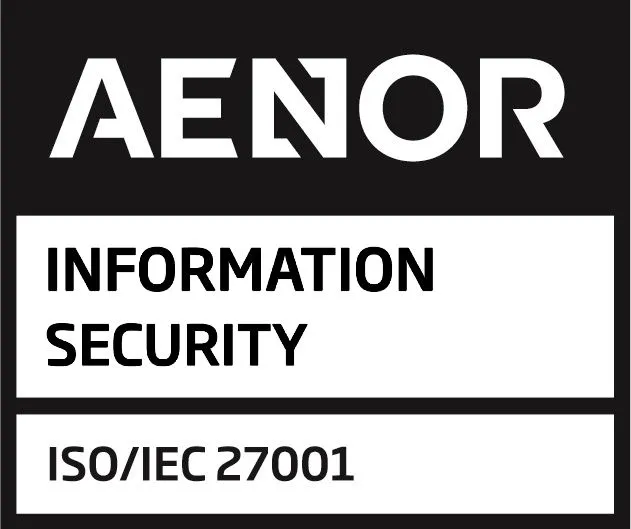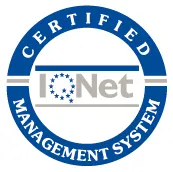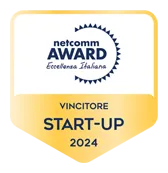
Artificial intelligence (AI) is revolutionising many aspects of our society and economy, including the HR departments of many companies. With the advent of new AI-based technologies, HR departments are undergoing a significant transformation in their work processes. From automating routine tasks to enhancing decision-making, AI offers a wide range of opportunities to optimise talent management. However, it also brings certain challenges and risks that must be considered for effective implementation.
Table of Contents
The Impact of AI on Recruitment and Selection
Recruitment and selection processes have changed dramatically with the incorporation of artificial intelligence. Until recently, a large part of recruiters’ time was traditionally spent reviewing CVs, screening candidates and coordinating interviews. Nowadays, AI-based tools can automate a great deal of these tasks.
Automation of Recruitment Tasks
AI enables the automation of tasks such as CV screening, social media profile analysis and interview scheduling. For example, systems like HireVue use AI algorithms to analyse video interviews, evaluating such aspects as a candidate’s body language, tone of voice and key words used. These tools can filter candidates more quickly and efficiently than traditional methods whilst also providing more detailed data for informed decision-making.
Candidate Evaluation: AI vs. Human
One of the most frequent debates in the implementation of Artificial Intelligence in Human Resources is the comparison between evaluations conducted by an algorithm and those performed by a human. In terms of evaluation mechanisms, AI utilises a variety of advanced techniques to assess candidates. These include:
- Semantic Analysis: Algorithms can analyse the language used in CVs and candidate responses, looking for patterns of words, expressions and phrases that are typically associated with successful candidates in specific roles. This type of analysis is useful for identifying the technical skills, soft skills and cultural suitability of a candidate.
- Video Interview Evaluation: Some tools use facial recognition technology and voice analysis to evaluate not only the verbal responses of candidates but also their body language, tone of voice and micro-expressions. These systems can detect signals indicating confidence, stress and adaptability, aspects that are often difficult to measure using only traditional methods.
- Predictive Models Based on Historical Data: AI can also build predictive models that calculate the likelihood of a candidate’s success in a specific role, based on the performance of previous employees with similar profiles. These models consider factors such as career trajectory, skills acquired and performance in previous evaluations.
AI stands out for its ability to process large volumes of data quickly and consistently. It also standardises evaluations, reducing the variations in selection criteria that can occur when multiple recruiters are involved. However, there are legitimate concerns about its tendency to replicate biases present in the historical data with which it has been trained: if an AI system has been fed data that historically favours certain profiles (such as men in tech positions), it may continue perpetuating these biases unless steps are taken to correct them.
To achieve ethical and fair use of AI, it is essential that companies constantly audit and adjust algorithms, ensuring they are free of bias and aligned with corporate values. Humans bring a critical component to the selection process: the ability to interpret contexts, intuit non-quantifiable aspects and make holistic assessments that go beyond objective data.
A standout commercial for Aquarius, directed by Owen Harris and released in May 2021, comes to mind. It portrays a fascinating debate between a job seeker and a robot, with an unexpected twist: the story highlights that sometimes the desire to do something outweighs logical algorithms. Could this be a glimpse into how job interviews might soon be conducted?
Enhancing the Candidate Experience
Artificial intelligence benefits not only recruiters but also the candidates themselves. AI-driven chatbot tools, such as Mya Systems, allow applicants to obtain immediate answers to their questions about the selection process, check the status of their job application and even receive personalised guidance throughout the different stages of the process. This 24/7 attention and ability to interact quickly and efficiently improves the candidate experience, which in turn positively impacts their perception of the company.
Predictive Analysis to Identify Potential for Success
AI is also being used to predict a candidate’s future success in a specific role. By using predictive analysis, algorithms such as those of PredictiveHire evaluate not only a candidate’s technical skills and past experience but also personality traits and soft skills such as adaptability and leadership. This data-driven approach allows for more accurate predictions of which candidates not only fit the role, but also have high potential for growth within the organisation.
Talent Retention and Employee Experience
AI is also being used to improve talent retention and manage the employee experience. Companies like IBM have developed AI systems that predict when an employee is at risk of leaving the company. By analysing patterns in performance data, satisfaction surveys and company behaviour, AI can alert HR departments so early preventative action can be taken.
Personalisation and Professional Development
Another key application of AI in talent retention is the personalisation of professional development plans. Tools like Cornerstone OnDemand and Workday use AI to recommend training programmes, internal projects and career plans tailored to each employee. This not only improves job satisfaction, but also fosters a sense of growth and belonging, two critical factors for retention.
Predicting Needs and Personalising Benefits
AI allows for the prediction of employees’ needs and preferences, facilitating the creation of personalised benefits programmes. For example, tools like SAP SuccessFactors use historical data and predictive analysis to suggest benefits, flexible schedules or specific wellness programmes that meet the expectations of all employees. This not only contributes to improving job satisfaction but also increases the likelihood of employees staying with the company long-term.
Monitoring Well-being and Organisational Climate
Employee well-being and organisational climate are critical factors for talent retention. Some AI solutions, like Microsoft Viva Insights, analyse behavioural and communication patterns in the workplace to identify early signs of stress or burnout. These systems can send recommendations to both employees and managers to take preventive measures, such as adjusting workloads, scheduling breaks or encouraging the use of leave days.
Risks and Challenges of AI in Human Resources
Despite the numerous benefits that artificial intelligence offers, its implementation in HR is not without its challenges. One of the main risks is the perpetuation of biases. If algorithms are trained on historical data that contains prejudices (for example, in terms of gender or ethnicity), these biases are likely to persist in automated decisions.
Transparency and Ethics in Decision-Making
Another challenge is the lack of transparency in how some AI algorithms operate. Machine learning models are often “black boxes,” where not even the developers can explain exactly how the system arrived at a specific decision. This poses ethical and legal issues, especially when decisions directly affect people, such as when hiring or firing an employee.
Biases in Data Analysis
One of the most serious risks in implementing AI in human resources is the perpetuation of implicit biases in data. AI algorithms learn from historical data and if this data contains biases, such as a preference for certain genders, ages or ethnic groups, AI could replicate these discriminatory practices. This is a real risk that has been documented in several cases, such as Amazon’s recruitment system, which discarded female candidates due to a bias present in the data it was trained on. It is of vital importance to regularly audit and correct algorithms to ensure fair decisions are made.
Dehumanisation of the Selection Process
While automation and AI can make recruitment processes more efficient, it also runs the risk of dehumanising the candidate’s experience. The lack of human interaction at key stages of the recruitment process can generate a negative perception among candidates and affect the company’s reputation as an employer. To mitigate this risk, a balance must be maintained in which technology complements the human experience, providing personalised and empathetic interaction where necessary.
Examples of Companies Using AI in Human Resources
Several companies are already applying AI in their HR processes and some stand out for their innovative approach:
- Unilever: The multinational has adopted AI tools for its selection process. They use psychometric games and video interviews analysed by algorithms to identify the best candidates before a human recruiter even contacts them. This has significantly reduced the time and costs associated with recruitment.
- Hilton: The hotel chain uses AI for staff selection. With the AllyO tool, they automate pre-selection and interview scheduling, allowing recruiters to focus on better qualified candidates.
- PepsiCo: PepsiCo has implemented AI to evaluate video interviews. Their system not only analyses candidates’ responses but also their tone of voice, body language and facial expressions, providing a more comprehensive analysis than traditional methods could achieve.
Popular AI Tools in Human Resources
The market for AI-based tools in human resources is constantly growing. Some of the most popular solutions include:
- LinkedIn Talent Solutions: Uses AI algorithms to suggest suitable candidates for a role, based on a combination of skills, work experience and activity on the platform.
- HireVue: Specialises in video interviews, combining AI and data analysis to evaluate candidates based on their verbal and non-verbal communication.
- Pymetrics: Conducts game-based assessments to measure candidates’ cognitive and emotional skills, using AI to identify which profile is best suited for each role.
- Eightfold.ai: This platform uses AI to identify internal and external talent, suggesting professional development paths and promotion opportunities within the company.
How to Implement AI Effectively in Human Resources
To maximise the advantages of AI in human resources, it is crucial to follow a clear strategy that takes both the benefits and associated risks into consideration. Here are some key steps:
- Identify Key Areas for Use: Before implementing any AI solution, it is important to determine which processes will benefit the most. This can include staff selection, talent management or the automation of administrative tasks.
- Select the Right Tools: Not all AI tools are the same. It is therefore essential to choose those that best align with your organisation’s specific needs.
- Training and Adaptation: Adopting new technologies requires a learning curve. It is vital to train teams to understand how AI works and how it can support their work.
- Monitoring and Adjustments: Implementing AI is not a static process. Its performance must be constantly monitored and adjustments made to ensure that the results are fair and accurate at all times.
What next?
Artificial intelligence in HR offers great potential to transform how companies attract, select and retain talent. By automating routine tasks, improving the accuracy of candidate selection and personalising the employee experience, AI can be a powerful tool to enhance talent management. However, it also poses ethical and operational challenges that should not be underestimated. The key to successful implementation lies in combining the power of technology with human expertise, while also always ensuring an ethical and transparent approach.
Ready to strengthen your employer brand to attract and retain top talent?








